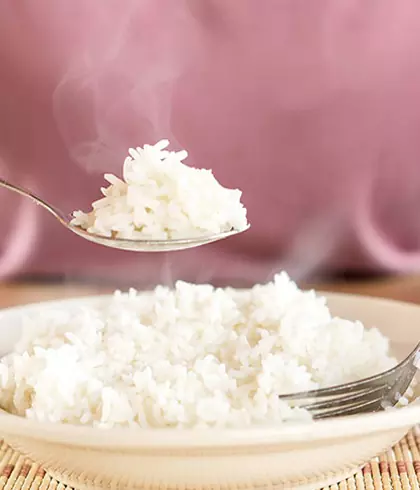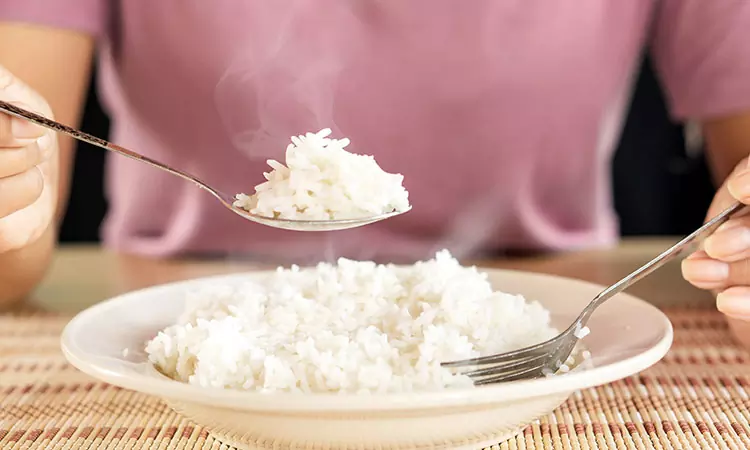

Love rice? You can eat and still maintain a healthy weight!
Who doesn’t like a comforting plateful of kadhi rice, rajma chawal or plain dal-chawal? It’s a favorite with so many Indians from North India. But wait, the South and the East love their rice with equal fervor, if not more. Be it fish curry rice, sambhar rice or Hyderabadi biryani, rice is consumed across the country in hundreds of different lip-smacking ways. But of late, rice has got a bit of a reputation for being an ‘unhealthy’ grain, there is a perception that eating rice will make you put on weight.
‘Want to lose weight? Cut down rice from your diet!’
For someone who wants to lose weight, this is the first advice he or she may get. But, how true is that? This staple food of lakhs of Indians has been around for centuries and is an integral part of the cuisine of this country. So how did it become unhealthy? Let's find out.
When rice is harvested it comes with an outer covering called the bran. The outer layer's main job is to protect the rice grains in the growing season. Once harvested, rice is taken through the process of hulling where most of the indigestible parts of the hull are separated. What remains is whole brown rice that still contains most of its nutrients. It is when this rice is taken for polishing that it becomes white and shiny.
All the nutrients present in the rice along with fibre are lost when it is polished. It is a refined cereal and is consumed more as it makes for lighter food.
Different types of rice contain different amounts of starch, which affects their texture and digestibility. Rice that does not stick together after cooking is high in amylose, while sticky rice is generally high in amylopectin. Because of these variations in starch composition, different types of rice can have different health effects.
Calories and weight
Weight gain occurs when the number of calories you consume exceeds the amount used as fuel for your activities and metabolism. Virtually rice grows fat, just like any other food if it is eaten in excess – more than required by your body.
On average, a man needs around 2,500kcal a day to maintain his weight. For a woman, the calorie count is around 2,000kcal a day. These values can vary depending on your age, metabolism, and levels of physical activity.
Therefore, to find out if rice can make you fat, check for calories you are gaining from rice.
Nutritional value of rice
100 gms of cooked white rice contains 130 calories, 29 gms carbs, nil fiber, 2 gms of protein, nil fat. Whereas, 100 gms of brown rice contains 112 calories, 24 gms of carbs, 2 gm of fiber, 2 gms of protein and 1 gm of fat.
How much rice should you eat every day?
Recommending the portion size of rice per day depends on the total calorie requirement for the day. There is no fixed amount that one should be eating daily. However, in case, you are worried that you could be gaining weight due to rice you can follow the ‘Plate Principle’ - Take quarter plate of rice and fill up the remaining part with vegetables, lentils and other nutritive foods for a healthy diet. Remember, what you consume with your rice is equally important, so ensure that your plate is piled up with plenty of vegetables, lentils and pulses such as bengal gram, green gram, black gram.
The bottom line
If you love rice, you’ll be happy to learn that experts don’t recommend cutting it out of your diets permanently. A balanced diet with the right kind of rice is important. If you eat white rice regularly, make sure you eat it in controlled portions and along with adequate amounts of veggies and other sources of proteins.
Key Takeaways
- Rice is a staple food in many Indian dishes, enjoyed across the country in various forms.
- Rice is often seen as unhealthy because it can lead to weight gain if eaten in excess.
- Brown rice retains more nutrients and fiber compared to polished white rice.
- Weight gain depends on eating more calories than your body needs, not just from rice.
- Eating rice with vegetables and proteins in controlled portions is recommended for a balanced diet.

